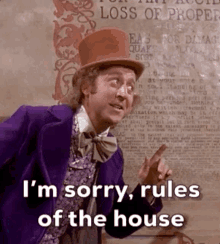Rules seem efficient. They’re direct. They make us feel like we’re in control.
But here’s the problem: rules rarely stick.
Project leaders often lean on rules to shape behavior:
“Work together.”
“Hurry up.”
“Be ready for changes.”
Teams may comply in the moment, but the behavior doesn’t last. As soon as the pressure eases, the rule fades from memory.
Metaphors, on the other hand, do something different. They don’t just tell people what to do—they change how people think. And when thinking shifts, behavior follows naturally.
5 Reasons Metaphors Work Better Than Rules
1. Rules tell people what to do. Metaphors change how they think.
A rule says: “Work together.”
A metaphor says: “We’re an orchestra.” Different roles, different instruments—but harmony only happens when we play in sync.
The metaphor paints a picture. People don’t just follow instructions—they understand the deeper why.
2. Rules get forgotten. Metaphors stay in the team’s language.
I’ve seen this countless times. A rule may be repeated once and vanish.
But a strong metaphor becomes shorthand for the whole team:
- “We need an orchestra moment here.”
- “This is a relay handoff—don’t drop the baton.”
- “Treat this like a road trip detour.”
The language becomes part of the culture.
3. Rules push compliance. Metaphors create buy-in.
Compliance is surface-level: people obey because they’re told.
Buy-in is deeper: people act because they see the value.
When I tell a team “we’re a relay race,” they’re not just running faster for me—they’re running for each other, because they see how the handoff matters.
4. Rules sound rigid. Metaphors give direction with flexibility.
Rules often feel like absolutes: do it this way, at this time, no exceptions.
Metaphors are guiding frameworks: “We’re on a road trip. We know where we’re headed, but we may need to adjust the route and decide when to stop”.
That flexibility builds resilience.
5. Rules work in the moment. Metaphors guide future decisions.
Rules fade once the situation changes.
Metaphors carry forward. A good metaphor gives people a mental model they can reuse in new contexts—without waiting for you to issue another rule.
Real Examples from My Projects
Here are three metaphors I’ve used that have stuck with teams long after the project ended:
- Silos when we are working individually: When people and departments felt siloed, this metaphor helped everyone see how they need others and vice versa. People started using thinking about collaboration more often.
- This is a marathon, not a sprint for longer initiatives: This helps set the expectation that we are in this for the long run and things won’t happen overnight. This is also useful when talking about pacing ourselves and not burning out.
- Road trip for adaptability: During some projects, the scope may shift multiple times. Instead of apologizing for the change, remind the team, “This is a road trip. The destination is the same, but detours are part of the journey.” The frustration eased, and morale stayed intact.
These weren’t just clever phrases. They became part of how the team thought and acted.
How You Can Use This
If you want to shift behavior in your own projects:
- Identify the rule you usually lean on.
- Ask yourself: what image or metaphor paints the same idea more vividly? Use ChatGPT as a brainstorm buddy is necessary.
- Test it in conversation. See if people repeat it back to you. If they do, you’ve found a keeper.
Final Thought
Rules control behavior in the moment.
Metaphors create mental models that shape behavior for the long haul.
As leaders, we don’t just need compliance. We need commitment, alignment, and resilience. Metaphors give us that.

